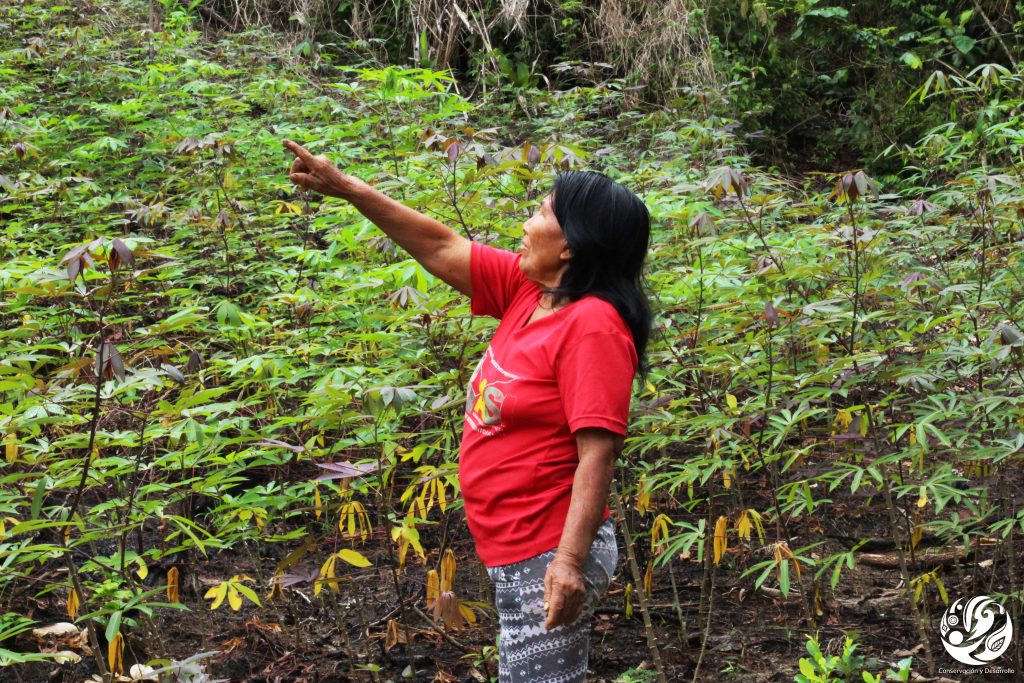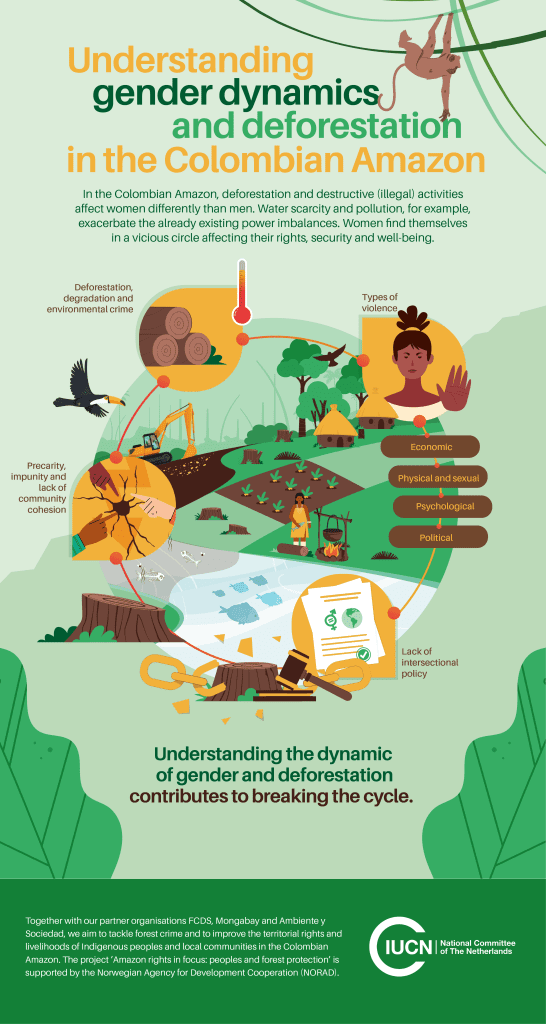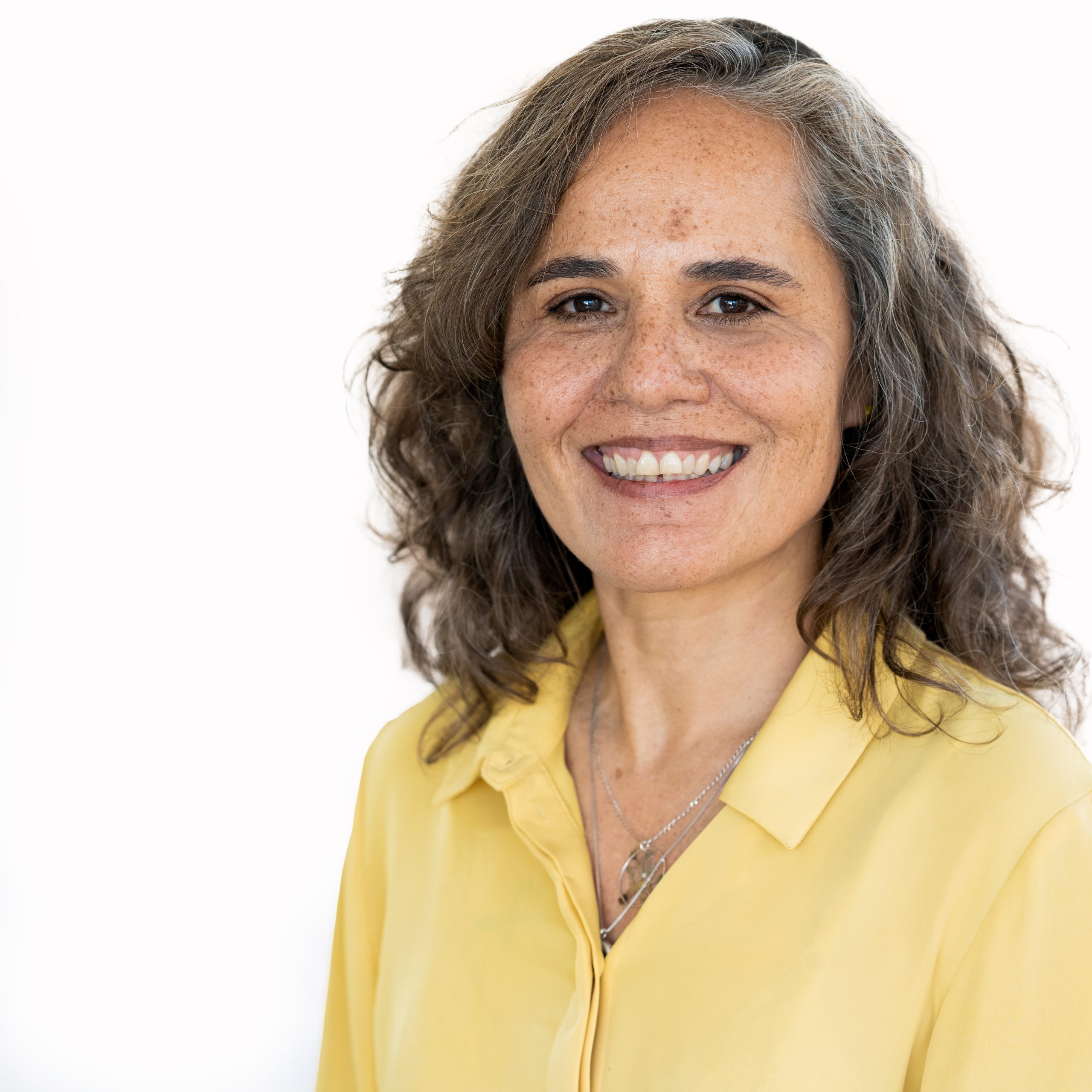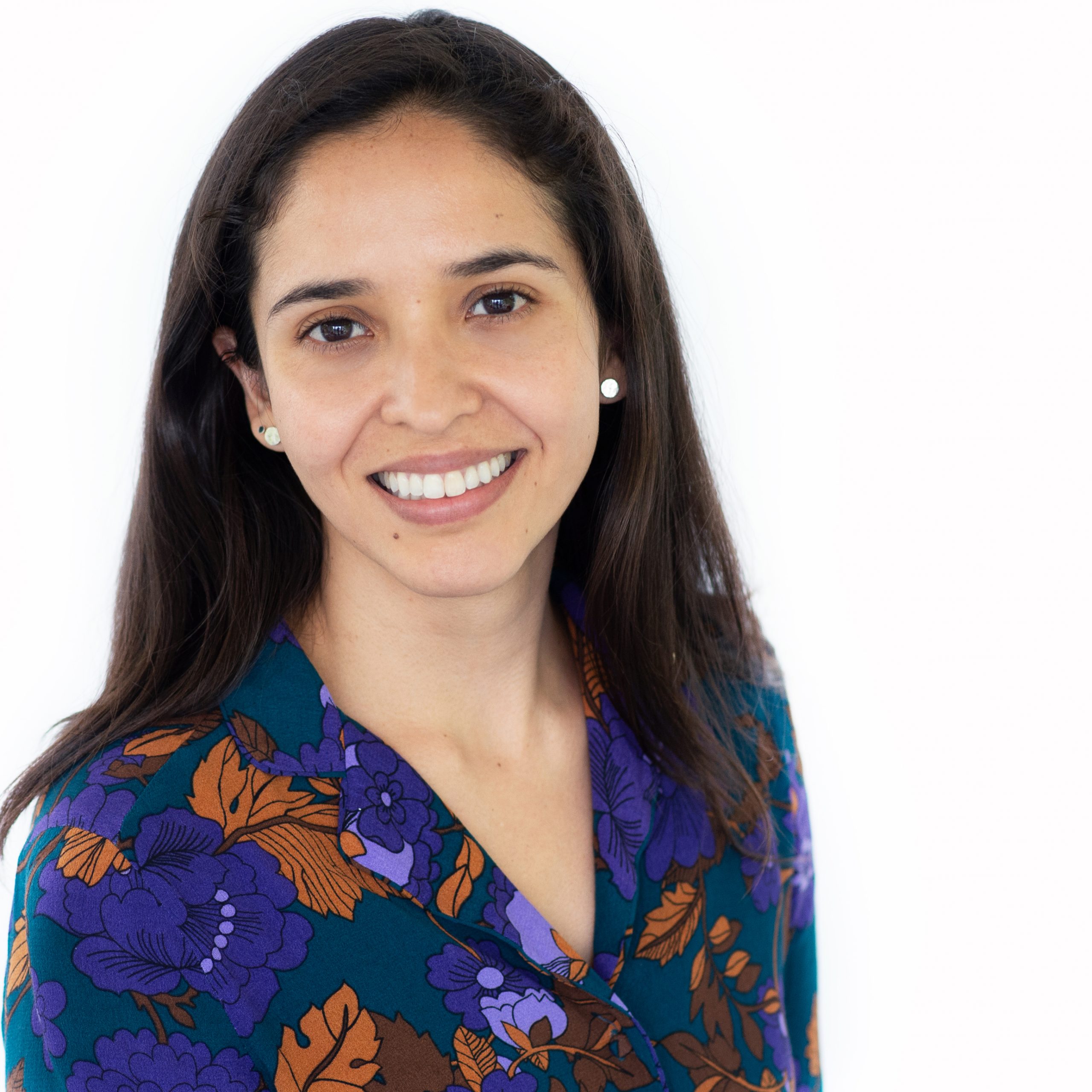This is what the economy of the Amazon…
10 July, 2024
Tuesday 05 march 2024
Header photo: women in the Colombian Amazon. © FCDS
Based on baseline research and the Observatorio Amazonia, we elaborate on dynamics in deforestation contexts in the Colombian Amazon. The study, conducted as part of our Amazon rights in focus project, analysed the role of women in the main drivers of deforestation. Applying critical feminist geography and intersectional approaches, it focused on power relationships affecting forested territories based on social inequalities related to gender, ethnicity and age. Central to the methodology was the notion of how the body is the first territory impacted by environmental degradation and conflict.
In the past years, Colombia has made significant steps towards improving its policy on gender equality, which includes targets on the percentage of women in top decision-making positions in public administration[1]OECD. (2020). Gender Equality in Colombia: Access to Justice and Politics at the Local Level. Link to source.. In 2023, Colombia ranked 42nd out of 146 countries on the Global Gender Gap Index 2023[2]World Economic Forum. (2023). Global Gender Gap Report 2023. Link to source., a significant improvement compared to 2022, when the South American country ranked 75th.
This progress is very positive, but it raises the question if all Colombian women benefit from it. According to DANE (2021), four out of ten women in rural parts of the country live in multidimensional poverty, affecting their health, education and standard of living.
Women have limited opportunities to access land for small-scale activities and do not play a significant role in land grabbing.
In a previous series on the drivers of deforestation in the Colombian Amazon, we elaborated on the importance of having access to land. The interest in Amazonian land exploded after the Colombian peace agreement was signed in 2016. Claiming land rights is a complicated process balancing legal and illegal practices, often in the form of land grabbing: the appropriation of extensive amounts of land by entities, governments or individuals.
Women have little access to land. According to DANE, 48.1 percent of the rural population are women, while around 64 percent of rural land owners are men. Women have limited opportunities to access land for small-scale activities and do not play a significant role in land grabbing. In the patriarchal system, sons inherit land from their fathers, making women dependent on the male members of their family. National laws on land regulation do not include a gender approach.
Text continues below the photo.

Due to the dominant roles of men in businesses and activities related to deforestation, men predominantly occupy the economic dynamics and public spaces in the communities. For women, it leads to unsafe areas and a wide range of types of gender violence, including economic, physical, sexual and political violence.
Prostitution, sexual violence and deceitful relationships are frequent in mining areas, causing unwanted pregnancies and single motherhood, further pushing the vulnerable socio-economic situation of these women. As a consequence, they increasingly participate in illegal mining activities. These differentiated impacts on women and girls happen amid generalised dynamics of crime and insecurity, tearing apart the social fabric of communities.
Women in the Colombian Amazon aim to improve their situation and protect the rainforest. This is not without risk: they resist death threats, exile and other consequences but continue their work. Mongabay Latam shared the challenges, dreams and goals of four women environmental defenders in Colombia as part of the Amazon rights in focus project. They grew up in a forest full of life that is now affected by mining, growing crops for illicit use and other activities driven by global demand.
Women are marginally involved in activities related to agriculture and livestock: they mainly work the land and sell dairy products. They represent only 15 percent of the workforce in the cattle sector, but are more involved in ‘invisible’ work, such as cooking and housekeeping. Despite long working hours, women who get paid face a salary gap of 85 percent compared to the salaries of men. While women are marginally involved in growing coca for illicit use, similar charges are brought against them when the authorities discover the plantations and camps.
In the palm oil sector, women are mainly involved in the initial stage of the crop cycle and picking up the palm seeds. Women also work as cooks during harvesting and take on care labour within their families. To work in the palm oil sector, families often have to move out of their communities. Living amid the large plantations isolates families from other family and community members, which decreases cohesion and strips women from their support network.
Women feel water pollution due to mining or decreased biodiversity due to monoculture more directly in their bodies.
Because women bear the brunt of care labour, they have a close connection with their natural environment and its degradation affects them disproportionally. Women feel water pollution due to mining or decreased biodiversity due to monoculture more directly in their bodies. Polluted water may affect their pregnancies, for example, but also forces them to make extra effort to provide their families with clean water and food.
In many situations in rural Colombia, women lack their sources of income and have restricted economic autonomy. Deforestation, nature degradation and environmental crime worsen the position of women. The consequences are higher poverty rates, increased violence and less access to land, education and credit. Women find themselves in a vicious circle. Better understanding gender dynamics in deforestation, and raising awareness of the need for intersectional, effective policies, including gender and environment, will contribute to breaking this cycle.
Text continues below the infographic.


Together with FCDS, Ambiente y Sociedad and news platform Mongabay, we are committed to tackling forest crime in the Amazon forests of Colombia, and to improve the territorial rights and livelihoods of Indigenous Peoples and local communities. Because these people are the forest’s best guardians.




| ↑1 | OECD. (2020). Gender Equality in Colombia: Access to Justice and Politics at the Local Level. Link to source. |
|---|---|
| ↑2 | World Economic Forum. (2023). Global Gender Gap Report 2023. Link to source. |